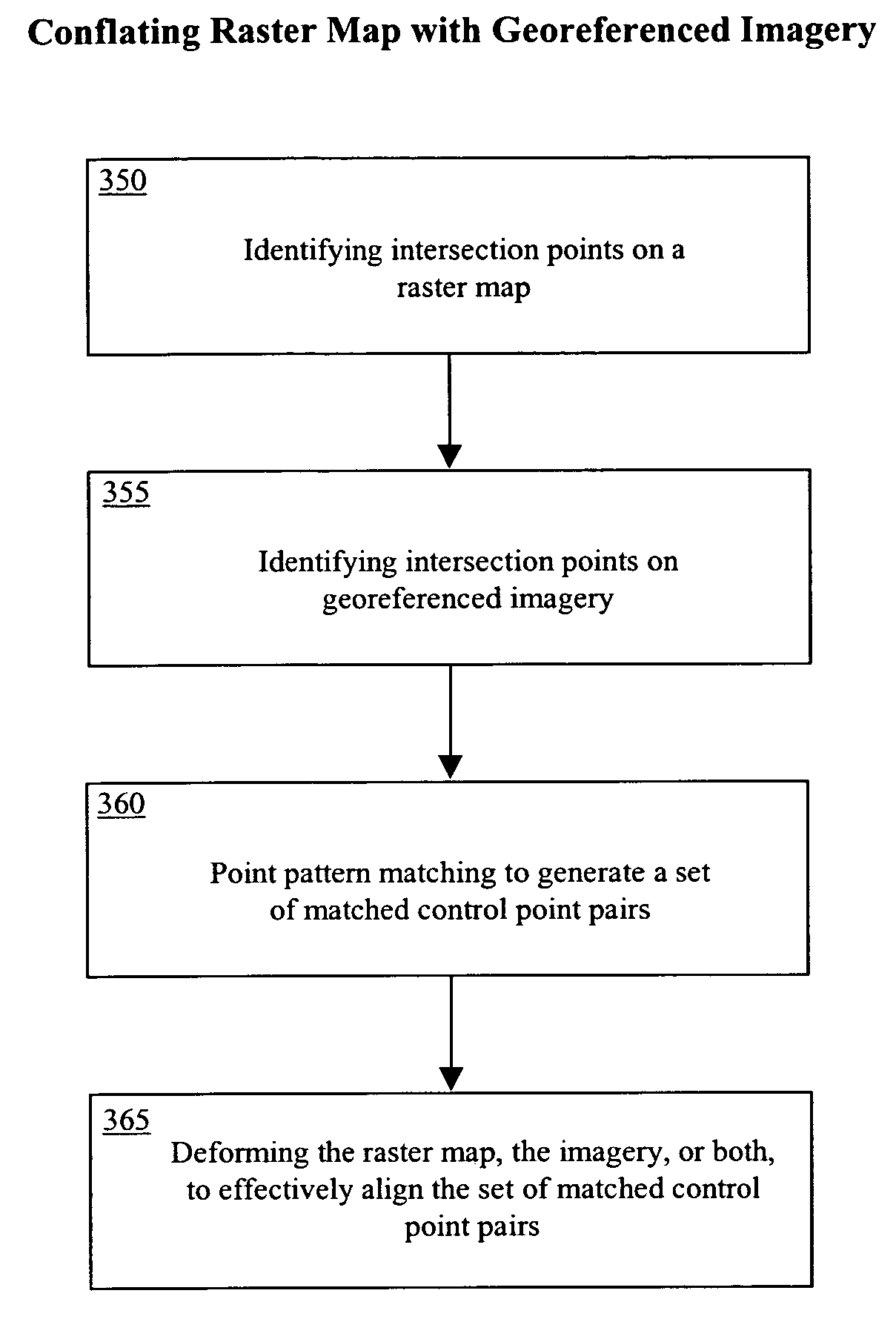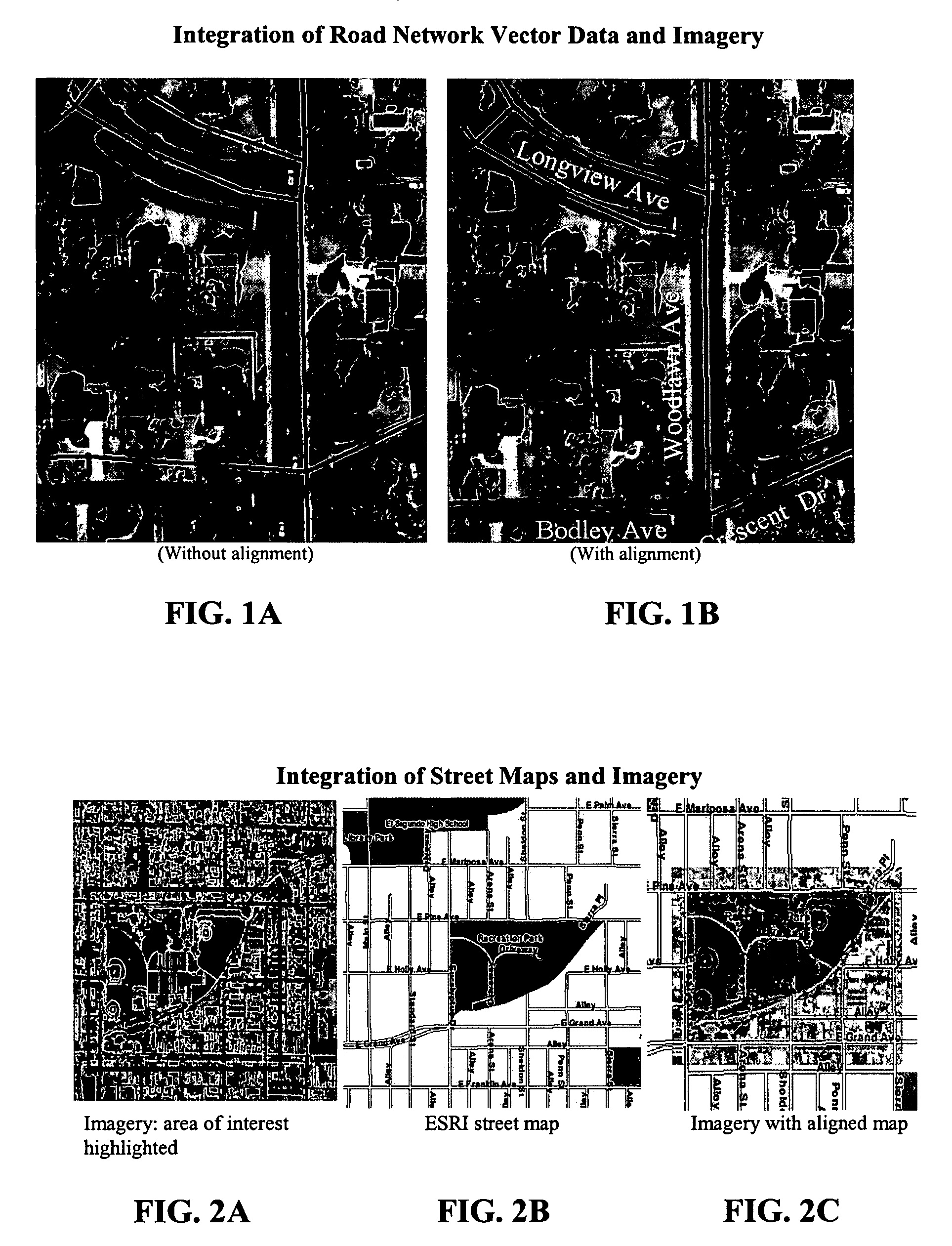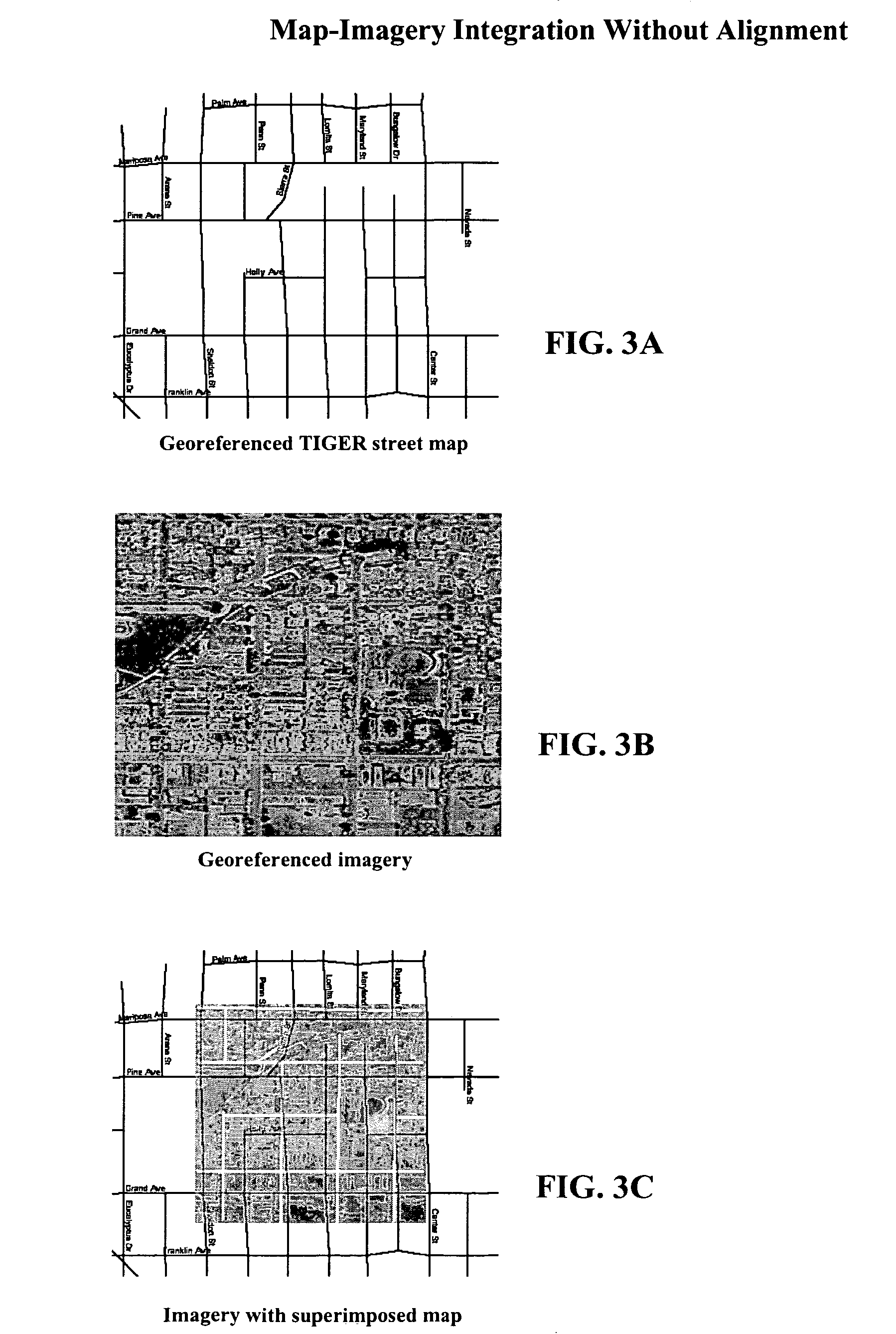System and method for fusing geospatial data
a geospatial data and system technology, applied in image analysis, scene recognition, instruments, etc., can solve the problems of manual conflation techniques laborious, not providing automatic conflation, and difficult task of accurately integrating different types of geospatial data
- Summary
- Abstract
- Description
- Claims
- Application Information
AI Technical Summary
Benefits of technology
Problems solved by technology
Method used
Image
Examples
Embodiment Construction
[0139]In the following detailed description, reference is made to the accompanying drawing figures which form a part hereof, and which show by way of illustration specific embodiments of the invention. It is to be understood by those of ordinary skill in this technological field that other embodiments may be utilized, and structural, electrical, as well as procedural changes may be made without departing from the scope of the present invention.
1.0 Overview
[0140]With the rapid improvement of geospatial data collection techniques, the growth of the Internet, and the implementation of Open GIS, a large amount of geospatial data is now readily available. Examples of well-known vector datasets include U.S. Census TIGER / Line files (covering most roads within the United States), NAVSTREETS from NAVTEQ, and the GDT data from Geographic Data Technology. National Map, Geography Network from Environmental Systems Research Institute (ESRI), MapQuest, Yahoo Map service, Google Map / Imagery servic...
PUM
 Login to View More
Login to View More Abstract
Description
Claims
Application Information
 Login to View More
Login to View More - R&D
- Intellectual Property
- Life Sciences
- Materials
- Tech Scout
- Unparalleled Data Quality
- Higher Quality Content
- 60% Fewer Hallucinations
Browse by: Latest US Patents, China's latest patents, Technical Efficacy Thesaurus, Application Domain, Technology Topic, Popular Technical Reports.
© 2025 PatSnap. All rights reserved.Legal|Privacy policy|Modern Slavery Act Transparency Statement|Sitemap|About US| Contact US: help@patsnap.com



